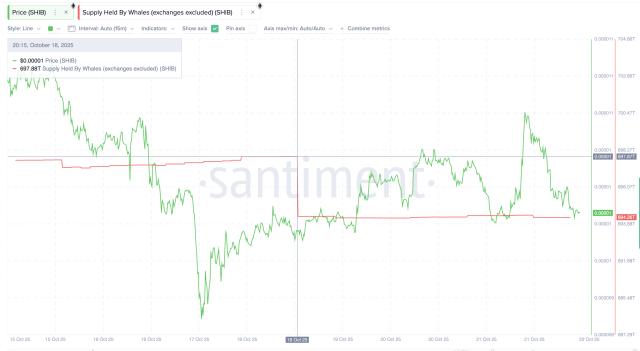Author: haotian
Many people are undoubtedly disappointed to have missed out on @PlasmaFDN and are eagerly awaiting Tether's stablecoin, @Stable. Of course, many are also confused: Why is @Tether_to pursuing a dual-edged strategy of Plasma and Stable? Will Stable issue a token? What exactly is Tether, the king of stablecoins, up to? Let me share my thoughts:
Simply put: Tether's "double-sword" strategy of Plasma and Stable is actually to recover the "market dividends" that have been given to Ethereum and Tron for many years, and realize a major leap in its business model from a stablecoin issuer to a global payment infrastructure.
1) Let’s first talk about the issue of grabbing back the cake. Currently, USDT has a volume of 170 billion US dollars, and its annual transaction volume even exceeds the total of PayPal and Visa. However, Tether can only earn 3-4% of government bond interest. Although its annual profit is 13 billion US dollars, it is a drop in the bucket compared to the actual value it creates. How do you understand this?
For example, USDT is a key part of DeFi liquidity. Its annual transaction fees are actually paid to the Ethereum network (fluctuating gas fees). This part of the fee cost is borne by the users and captured by the Ethereum network, while Tether does not profit from it. If Tether launches its own stablecoin chain, theoretically, this part of the transaction fee can be pocketed.
In addition, everyone knows that Tron has made a lot of money thanks to the payment demand of USDT. In 2024 alone, Tron's revenue was nearly 2 billion US dollars, and Tether could not directly benefit from this money.
Therefore, the direct motivation for Tether to combine Plasma and Stable is to recover the DeFi ecosystem income rights such as USDT transaction fees, payment service fees, etc. that have been controlled by Ethereum and Tron for many years.
This severely limits Tether's control over its massive USDT stablecoin economy. As Plasma and Stable infrastructure mature and expand, it's time to reclaim this dividend that has been ceded for many years.
2) So, how should we understand the respective positioning of Plasma and Stable?
Plasma $XPL is a stablecoin chain backed by Tether's sister company @bitfinex and backed by @peterthiel. It's marketed as a consumer-focused platform, leveraging Bitcoin for security and censorship resistance. Its key advantage is its ability to challenge PayPal's dominance in the payments space through TradFi, while also integrating with over 100 DeFi protocols to siphon off Crypto's native revenue.
For example, the Plasma One neo-bank product matrix, which offers a 10% passive savings benefit and a 4% cashback debit card, would undoubtedly cause a stir in the traditional payment market if there were no regulatory hurdles, seizing market share from legacy payment systems like PayPal.
For example, Plasma integrates the entire Crypto infrastructure through EVM compatibility, aiming to integrate @aave@ethena_labs
It will incorporate other protocols with strong money-making capabilities into its own profit portfolio to consolidate the interest-bearing advantage of its debit cards. Otherwise, why can Plasma One have a 10% savings return in addition to a 4% treasury bond return?
Moreover, Plasma also introduced a dedicated channel, subsidizing users' gas fees through paymaster, so that the network congestion costs originally required to play the Crypto DeFi ecosystem are passed on to the protocol itself, achieving zero-fee interaction, which is very attractive to C-end users.
Stable is a "pure USDT" stablecoin chain planned to be issued by Tether itself. It is a B2B payment chain that uses USDT as the gas fee and settlement layer and may focus on payment and settlement scenarios.
Based on this understanding, we can answer two questions that everyone is confused about:
1. Will Stable issue tokens? According to Tether CEO @paoloardoino
A recent interview revealed that Stable will maintain minimal complexity and will not add additional token mechanisms. In other words, no new coins will be issued for the time being; the coin $USDT is the one it already has.
2. What is the purpose of Stable? It's likely to replace Tron's USDT ecosystem. Its goal is to integrate B2B payment channels. For example, it recently introduced PayPal's PYUSD. It seems Stable intends to serve as a settlement layer between stablecoins, further strengthening USDT's position as the leading stablecoin.
Moreover, once Stable issues new coins, it will directly impact XPL's ability to capture ecological value. Plasma and Stable can be fully interoperable, using XPL tokens to incentivize channel parties on Stable to help various stablecoin issuers better utilize Stable settlement, while connecting to Plasma to capture the siphon value of the entire USDT ecosystem.
above.
So, if Plasma realizes its ambition to reconstruct the traditional payment infrastructure by benchmarking against Paypal in the future, and if its goal of recycling the economic vitality value of Crypto’s DeFi stablecoins over the years is achieved, do you still think the current FDV of 12B is high?
Of course, business ambitions and actual implementation are two different things. Native crypto ecosystems like Ethereum and Tron will not sit idly by and watch their market share be taken away by Plasma, and user migration also takes time. Traditional payment giants like Paypal and Visa are also unlikely to surrender easily. What if the 10% savings of their Plasma One are deemed illegal by regulators? And so on.
Obviously, there are still many variables behind this. But one thing is certain: Tether has been in the business of issuing stablecoins for many years and is now aiming for the greater goal of becoming a global payment infrastructure giant.
Whether it can be achieved or not is not important. What is most important is how many opportunities we who are running along in this process can seize!








